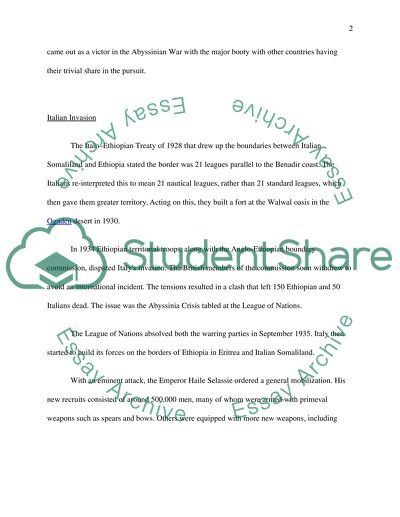Cite this document
(“Abyssinian crisis 1935-1936 Essay Example | Topics and Well Written Essays - 2500 words”, n.d.)
Retrieved from https://studentshare.org/history/1529123-abyssinian-crisis-1935-1936
Retrieved from https://studentshare.org/history/1529123-abyssinian-crisis-1935-1936
(Abyssinian Crisis 1935-1936 Essay Example | Topics and Well Written Essays - 2500 Words)
https://studentshare.org/history/1529123-abyssinian-crisis-1935-1936.
https://studentshare.org/history/1529123-abyssinian-crisis-1935-1936.
“Abyssinian Crisis 1935-1936 Essay Example | Topics and Well Written Essays - 2500 Words”, n.d. https://studentshare.org/history/1529123-abyssinian-crisis-1935-1936.


